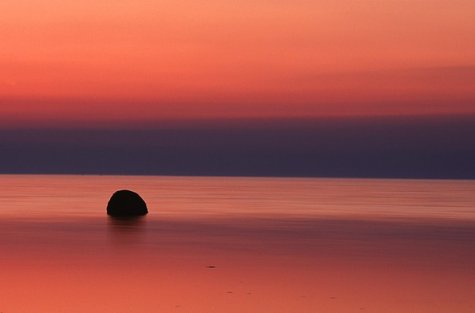Calendar summer began at 2.09 a.m.
Photo: Arne Ader
Translation: Liis
Night at sea
The summer solstice on the northern hemisphere always is on June 20th or 21st when the sun seems to “stand still”: the Earth axis then has its maximum tilt towards the Sun and the moment can be precisely calculated – this year at 2.09 am and on June 21st.
For ancient Estonians the solstice day or the ”Leedo day” has been highly significant together with the leedo fires. The name ”Jaanipäev”, (St.) John’s Day and its celebrations were accepted slowly and by enforcement only after the arrival of the Christian crusaders to Livonia. In his ”Liwonian Chronicles” Balthasar Russow notes for the year 1578 the Estonian custom to celebrate the Leedo day by making fires instead of going to church on St John’s day.
In nature summer arrives differently from the calendar moment; the signs of summer’s arrival are apple trees having finished their flowering, rye coming into ear and the arrival of swifts that bring the real night warmth – not the arrival of swallows. This time comes around the twentieth day of May, earlier in South Estonia. Mid-summer arrives with the flowering of the common lime tree (in city parks the large-leaved lime is used instead; it is imported in Estonia and flowers a little earlier), when the average temperature of a night and day is more than 15 degrees.
A happy Leedo celebration to all!
More to read: The most beautiful time of the year is here (in Estonian)









